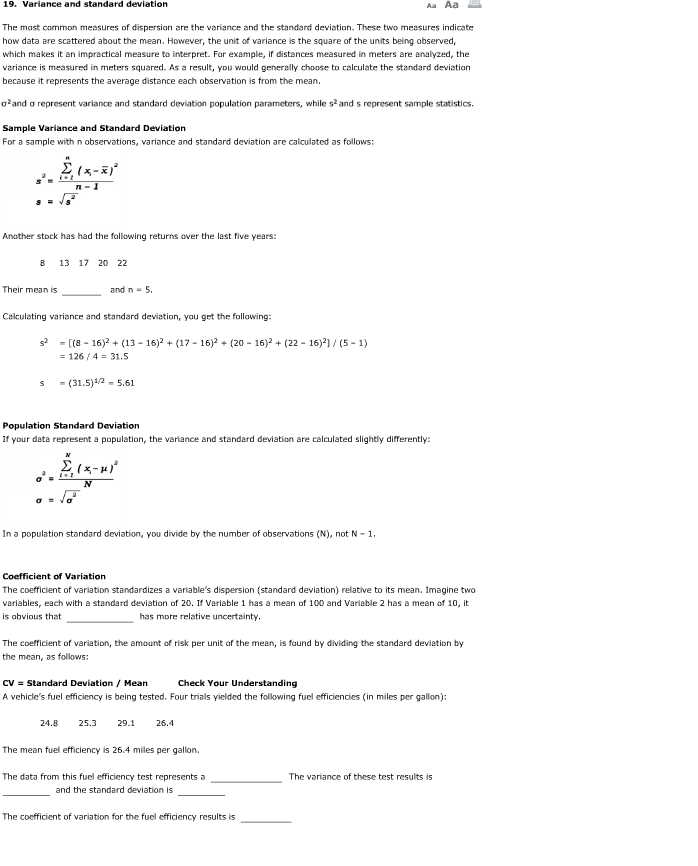
19. Variance and standard deviation Aa Aa The mast common measures of dispersion are the variance and the standard deviation. These two measures indicate how data are scattered about the mean. However, the unit of variance is the square of the units being observed, which makes it an impractical measure to interpret. Far example, if distances measured in meters are analyzed, the variance is measured in meters squared. As a result, you would generally choose to calculate the standard deviation because it represents the average distance each observation is from the mean. o?and represent variance and standard deviation population parameters, while s2 and s represent sample statistics. Sample Variance and Standard Deviation For a sample with n observations, variance and standard deviation are calculated as follows (x-x,- Another stock has had the fallowing returns over the last five years: 8 13 17 20 22 Their mean is_ and n-5 Calculating variance and standard deviation, you get the following g2 -[(8-16)2 + (13-16)2 + (17-16). (20-16 4(22-16)2] / 5-1) 126 / 4 31.5 s (31.5)12-5.61 Population Standard Deviation If your data represent a population, the variance and standard deviation are calculated slightly differently: In a population standard deviation, you divide by the number of observations (N), not N -1 Coefficient of Variation The coefficient of variation standardizes a variable's dispersion (standard deviation) relative to its mean. Imagine two variables, each with a standard deviatian of 20. If Variable 1 has a mean of 100 and Variable 2 has a mean of 10, it is obvious that has more relative uncertainty. The coefficient of variation, the amount of risk per unit af the mean, is faund by dividing the standard deviation by the mean, as follows CV Standard Deviation /Mean A vehicle's fuel efficiency is being tested. Four trials yielded the following fuel efficiencies (in miles per gallon): Check Your Understanding 24.825.329.1 26.4 The mean fuel efficiency is 26.4 miles per gallon. The data from this fuel efficiency test represents a The variance of these test results is and the standard deviation is The coefficient of variation for the fuel efficiency results is







